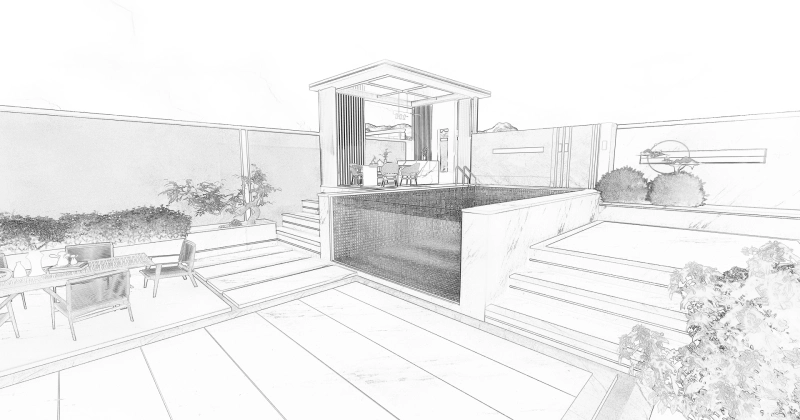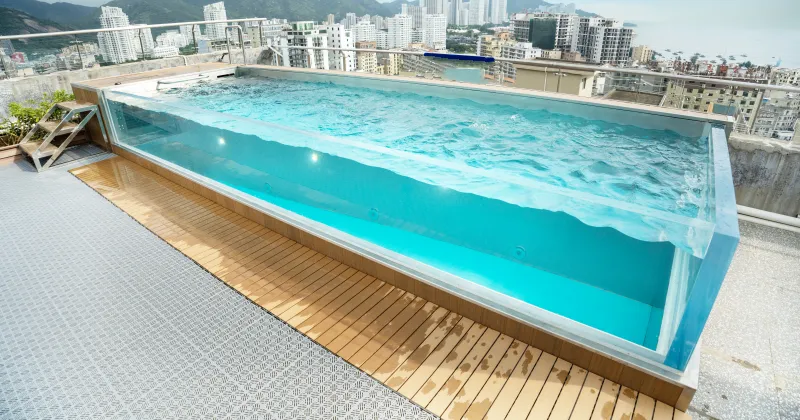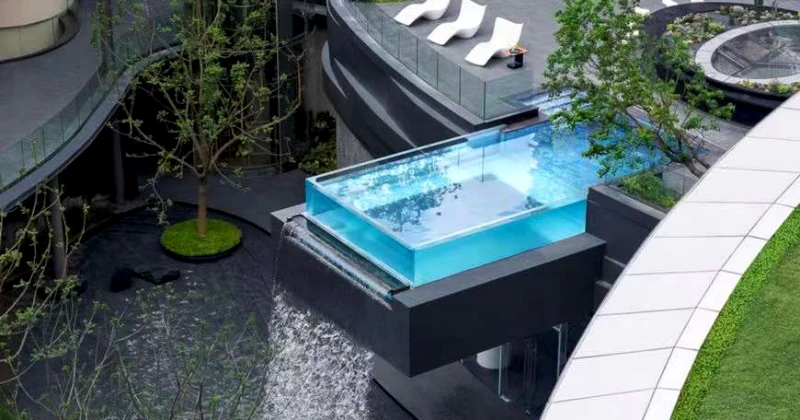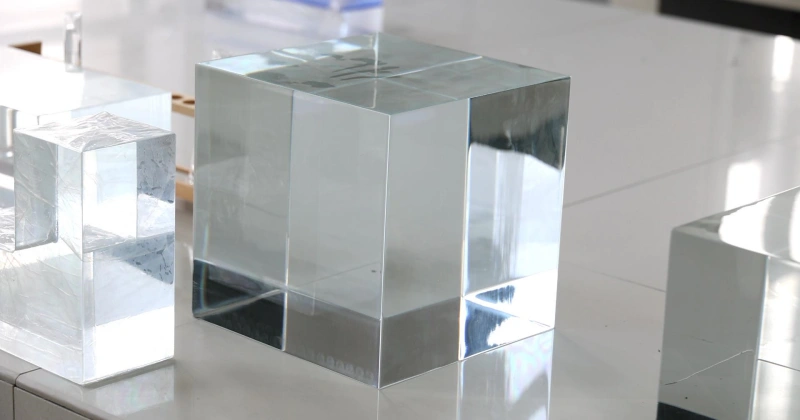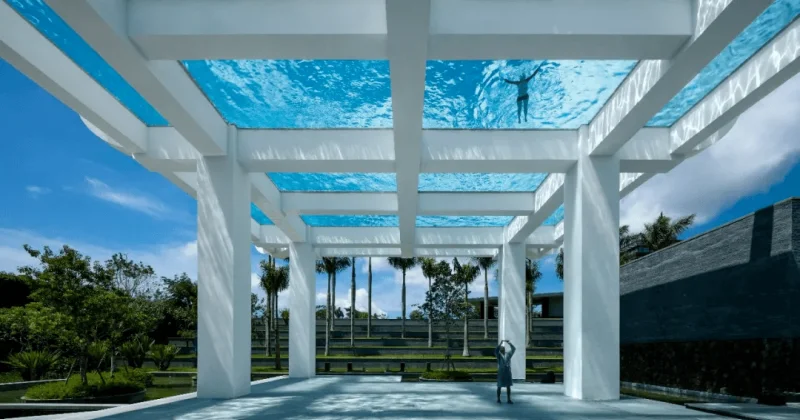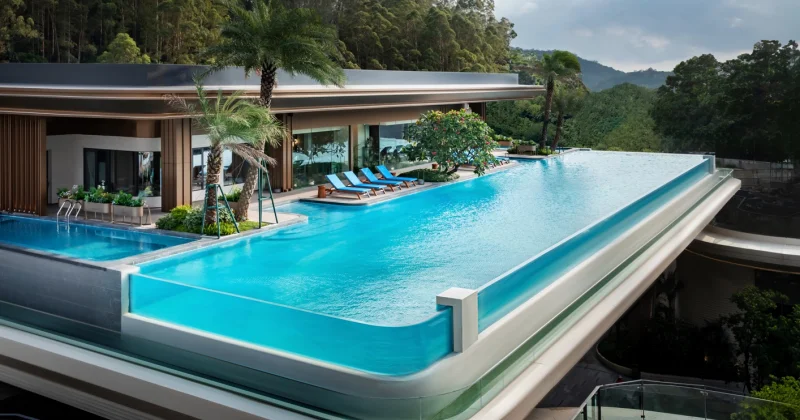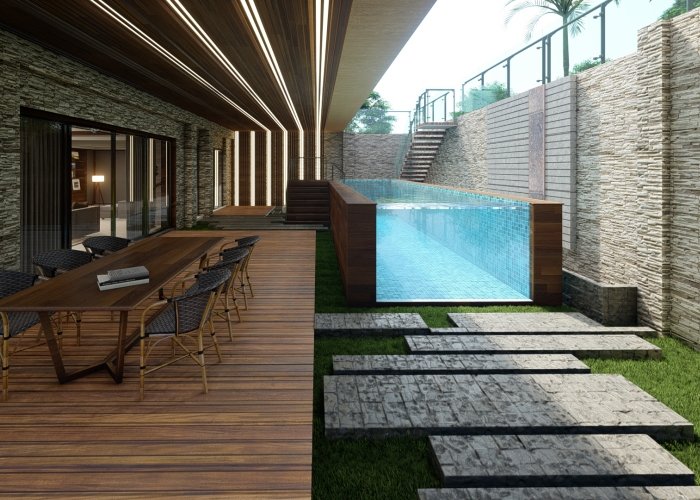
How to Winterize Your Steel Above-Ground Pool and Protect It from Damage
An above-ground steel pool is a great way to have fun on sunny days, but you have to winterize your pool properly as the weather gets colder. Winterizing is very important because it helps extend the lifespan of your pool while preparing it for harm that comes with the winter season.
Failure to do this will result in costly problems like cracked liners, damaged plumbing, and algae growth, all of which can spoil the next season.
This guide describes the different steps to properly prepare and winterize your steel above-ground pool.
Everyone who owns a pool should know how to protect it from winter damage and how to open it in spring without any problems or using additional tools. So, let’s talk about the reasons behind pool winterization, the process itself, and how it should be done correctly.
Why Winterizing Your Pool Matters?
Your pool is winterized to keep it safe through the cold season. This prevents water from freezing and causing cracks in the floor and the pool walls. It also prevents debris and dust accumulation and water chemical inequalities.
If such steps are not taken, the pool may be costly to repair and require much more maintenance during spring. If you learn the appropriate winterizing steps outlined here, your pool and equipment will last longer during the cold season.

Effects of Not Winterizing
Neglecting to winterize your pool can lead to severe consequences, including:
- Cracked Walls and Liners: When water freezes, it expands and does structural damage.
- Broken Equipment: The problem with freezing temperatures is that they damage filters, pumps, plumbing, etc.
Algae Growth: If your pool is out of chemical balance, it can be an algae breeding ground.
- Increased Costs: It’s expensive to repair or replace damaged parts.
Fortunately, you can take preventative measures to prevent these problems and help you give your investment a fighting chance.
Essential Tools and Materials
Before getting started, gather the essential supplies to make the process efficient:
- Swimming Pool Winterize Kit: It contains winterizing chemicals to stabilize the quality of the water.
- Swimming Pool Winterizing Plugs: They keep water out of pipes and fixtures.
- Pool Cover: Most of these covers are dirt-resistant and do not allow direct sunlight into the pool.
- Skimmer Plate: Prevents water collection in the skimmer.
- Pool Vacuum and Brush: It thoroughly cleans the pool.
- Air Pillow: Prevents ice from damaging the pool walls.
- Garden Hose: This is for draining water, if necessary.
These items will make the winterization process much easier and more effective.
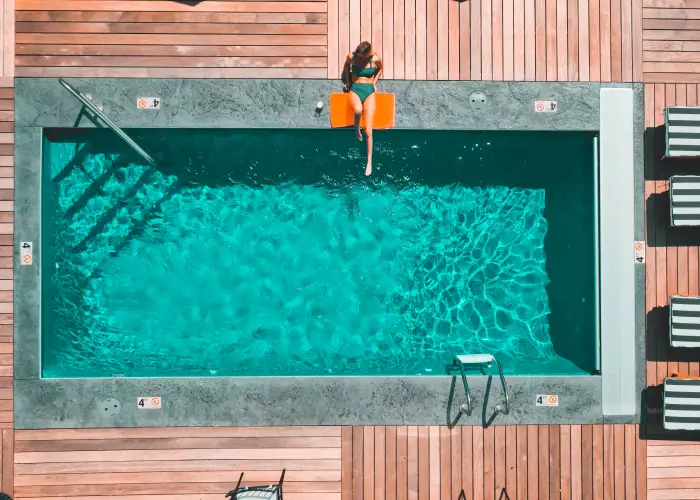
Step-by-Step Guide to Winterize Your Steel Above-Ground Pool
1. Clean the Pool Thoroughly
Start by cleaning the pool to remove debris, dirt, and algae:
- You can clean the bottom of the pool with a pool vacuum.
- Wipe the walls with a brush so that all dirt that sticks to the walls can be easily detached.
- Collect leaves and debris off the water’s surface.
It also keeps the pool in good condition and prevents algae from growing over winter.
2. Balance the Water Chemistry
Balanced water chemistry helps keep your pool from corroding or scaling. Follow these steps:
- Dip strips into the water and test with a pool testing kit.
- Furthermore, adjust the pH to 7.4 to 7.6.
- The alkalinity should be set to 100 – 150 ppm.
- Ultimately, chlorine and algaecide from the swimming pool winterize kit should be poured into the pool to stop bacterial and algae growth.
Maintaining the right portions of the water chemistry is important to protect the pool's interior surface and avoid problems resulting from chemical combinations.
3. Lower the Water Level
Lowering the water level helps protect the skimmer and plumbing from freezing damage:
- You should pump out water using a hose or pump, starting below the skimmer opening.
- Do not allow the pool to be empty completely, as the water in it supports its structure against ground pressures.
It also relieves wall stress on the pool walls and protects against freeze damage.
4. Drain Pool Equipment
Water left in your pool equipment can freeze and cause cracks. To avoid this:
- If you are using a regular pool pump and filter, first disconnect and then drain them.
- Pull off any hoses and allow them to completely dry.
- Keep the equipment in a dry, frost-free place.
Draining equipment properly lengthens the life span and lowers damage risks.
5. Install Swimming Pool Winterizing Plugs
Winterizing plugs are essential for sealing off water flow in pipes and fittings:
- Plugs will be installed in return jets and other openings to stop the water from entering.
- Be sure to tighten them up so that they don't leak.
This one easy step defends your plumbing from freezing temperatures.
6. Add an Air Pillow
An air pillow helps prevent ice from expanding and damaging the pool walls:
- Blow up your air pillow and put one in the center of your pool.
- Secure it in the place by using strings or ties.
The air pillow is great for protecting the pool structure, as it absorbs pressure from ice formation.
7. Cover the Pool
A high-quality pool cover protects your pool from debris and sunlight:
- Cover the pool and spread it over the pool to fit it completely.
- A cable or water bag can be used to keep the cover in place.
- It is good to check the cover in winter to remove the accumulated snow and debris.
A properly installed cover keeps your pool clean and reduces maintenance efforts in spring.

Additional Tips for Winterizing
Protecting Against Freezing Temperatures
In areas with freezing conditions, extra precautions can save your pool from damage:
- Antifreeze can also be used in plumbing lines.
- Dry all components to avoid cracking.
- Seals and plugs should fit well into the pool.
Storing Accessories
Remove and store all accessories, including ladders, toys, and cleaning tools:
- Clean and keep them dry before storage.
- Keep them in a safe, dry place to avoid wear and tear.
Storing your accessories properly prevents undue damage and leaves your accessories ready to use again in the spring.
Periodic Maintenance During Winter
Even after winterizing, occasional checks are beneficial:
- Check that the pool cover is not torn or loose.
- If the air pillow deflates and floats toward the pool's wall, get it back into the middle.
- Keep the cover clear of snow and debris to relieve some stress.
These are steps that will lower the probability of unexpected problems in winter.
Preventing Common Winter Pool Problems
Avoiding Algae and Bacteria Growth
- Properly adding chemicals from your swimming pool winterize kit is essential. Failing to take this step can result in algae and bacteria problems in spring, which are difficult to clean.
- Mix chemicals thoroughly before you cover the pool.
Handling Ice Formation
- If ice expands in the pool, the walls can be damaged. The easiest way to minimize that risk is to use an air pillow.
- Periodically check the air pillow and make sure it’s inflated.
Securing the Pool Cover
- Debris can enter your pool through a loose or improperly secured cover.
- If you’ve installed the cover, check if it fits and fastens.

Additional Considerations for Steel Pools
Addressing Metal-Specific Concerns
Steel above-ground pools require extra care to prevent rust and corrosion:
- Before winter, check all exposed metal parts are cleaned and dried.
- The prone areas can be protected from rusting by applying rust-resistant spray.
- The winterizing process also gives you the best opportunity to check for wear or damage.
Using Appropriate Covers
Steel pools benefit from sturdy covers:
- Buy a pool cover manufactured to handle the stress of snow and ice accumulation.
- The sunlight is also likely to affect the pool walls; therefore, search for covers with Ultraviolet protection.
Preventing Pool Wall Damage
- Before winterizing, look at pool walls for signs of cracks or rust.
- Small issues should be addressed immediately so they don’t become bigger problems over the winter.
- If you are trying to reduce stress on vulnerable areas, use padding or insulation.

How to Make Spring Pool Opening Easier
Winterizing properly will give you a smooth transition to spring. Here are some tips to simplify your pool’s reopening:
- Check Equipment Early: Check your pump, filter, and hoses and reinstall them well before the swimming season.
- Clean the Cover: Clean off any debris and water from the cover to make sure it doesn’t get into the pool, then remove the pool cover.
- Test Water Chemistry: Use a testing kit to rebalance your pool’s water to ensure it’s safe for swimming.
- Run the Pump: Run the filtration system for 24 – 48 hours to get it to circulate and clean the water well.
By planning, reopening your pool is quick and hassle-free.
Benefits of Proper Winterization
- Saves Time and Money: It reduces the cost of expensive repairs that may result from improper winterization.
- Preserve Pool Quality: This prevents your pool from getting chemical imbalances and structural problems.
- Simplifies Spring Cleaning: It ensures your pool is in good shape to save you time.
- Increases Pool Longevity: Proper care of your pool and its parts will extend its life.
- Prevents Stress: Knowing your pool is protected gives you peace of mind throughout winter.

Final Thoughts
While it may seem like a hassle, winterizing your steel above-ground pool is something you should do to protect your investment. It allows for hassle-free reopening in the spring. Using this guide, and a swimming pool winterizing kit, you can keep your pool safe from wintertime damage. If your pool is cared for well, you will have it for many years.






